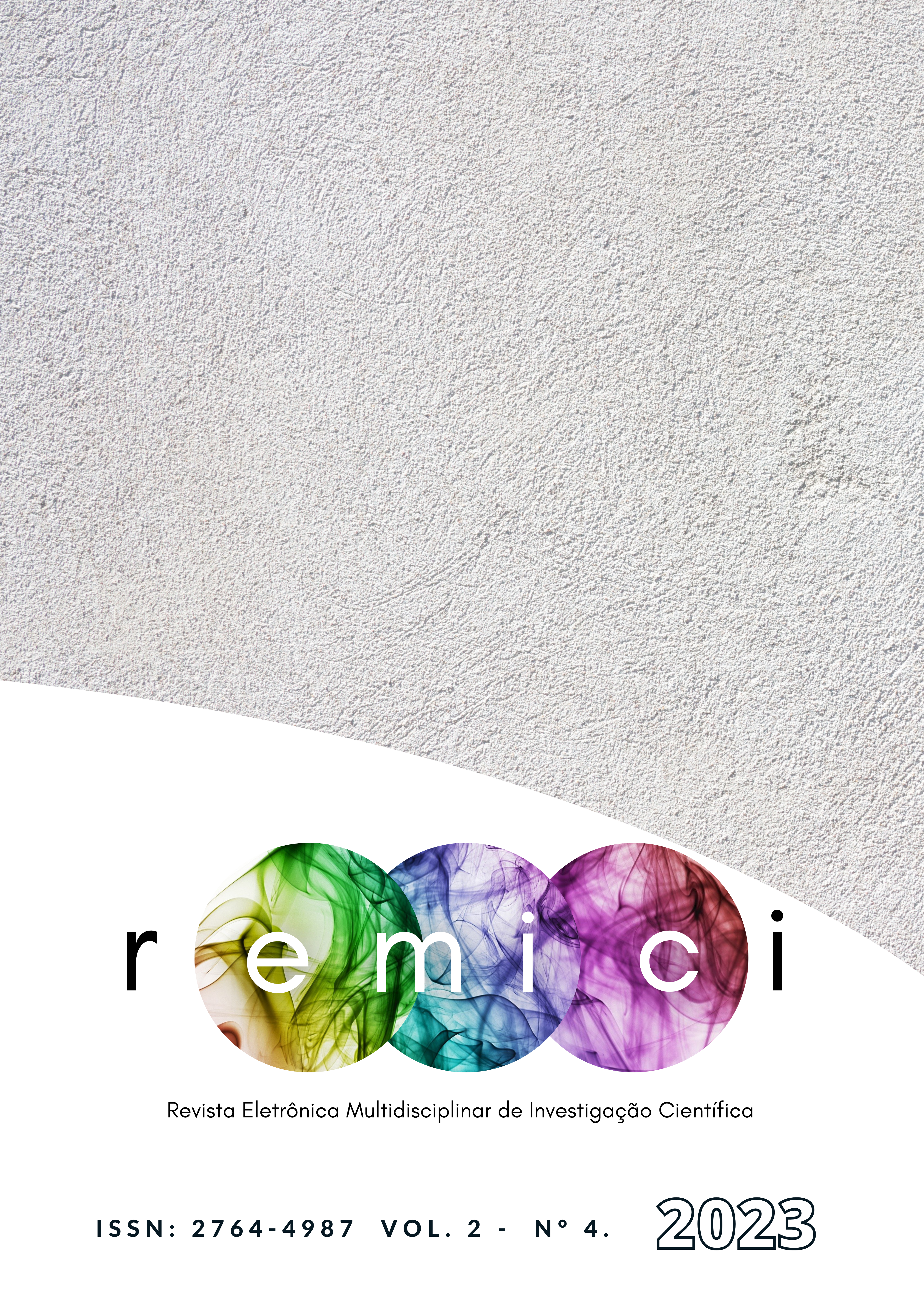TRANSTORNO DO ESPECTRO AUTISTA: RELATO DE CASO FEMININO
Contenido principal del artículo
Resumen
Grande parte das jovens portadoras do espectro autista (TEA) tem, principalmente, dificuldades para se comunicar e interagir com outros indivíduos e apresentam certas adversidades psicomotoras. Além disso, podem apresentar alguns estereótipos, e ter uma personalidade na qual dificulta realizar tarefas cotidianas e problemas de gerenciamento das emoções, visto que geralmente apresentam ansiedade patológica e excesso de estresse. A baixa quantidade de relatos brasileiros de meninas com TEA e suas particularidades no neurodesenvolvimento incentivou a elaboração deste relato de caso de uma paciente com TEA do sexo feminino. Assim, espera-se que haja um esclarecimento maior sobre a condição de TEA no sexo feminino, suas diferenças e semelhanças com outros indivíduos com autismo.
Detalles del artículo

Esta obra está bajo una licencia internacional Creative Commons Atribución-NoComercial-CompartirIgual 4.0.
Citas
ALMEIDA, S. I. M. Genes envolvidos na determinação do autismo. 2014, 46p. Monografia. Universidade Fernando Pessoa, Porto, 2014.
AMEIS, Stephanie H.. Coping, fostering resilience, and driving care innovation for autistic people and their families during the COVID-19 pandemic and beyond. 2020. Disponível em: https://www.ncbi.nlm.nih.gov/pmc/articles/PMC7374665/pdf/13229_2020_Article_365.pdf. Acesso em: 23 jan. 2021.
CARDONA, F. et al. Developmental Profile and Diagnoses in Children Presenting with Motor Stereotypies. Frontiers In Pediatric, Roma, v. 04, n. 126, p. 1-6, nov. 2016. Disponível em: https://www.ncbi.nlm.nih.gov/pmc/articles/PMC5120120/pdf/fped-04-00126.pdf. Acesso em: 07 dez. 2020.
DRAAISMA, D. Stereotypes of autism. Philosophical Transactions Of The Royal Society B: Biological Sciences, [S.L.], v. 364, n. 1522, p. 1475-1480, 2009. The Royal Society. http://dx.doi.org/10.1098/rstb.2008.0324.
FREEMAN, R. D. et al. Stereotypic movement disorder: easily missed. Developmental Medicine & Child Neurology, Vancouver, v. 52, n. 08, p. 733-738, 2010. Disponível em: https://onlinelibrary.wiley.com/doi/full/10.1111/j.1469-8749.2010.03627.x. Acesso em: 07 dez. 2020.
HEAD, A. M. et al. Gender differences in emotionality and sociability in children with autism spectrum disorders. Molecular Autism, v. 5, n. 01, p. 19, 2014.
HILLER, R.M. et al. Sex differences in autism spectrum disorder based on DSM-5 criteria: evidence from clinician and teacher reporting. Journal of Abnormal Child Psychology, v. 42, n. 8, p. 1381–1393, 2014.
HUFNAGEL, C. et al. The Need for Objective Measures of Stress in Autism. Frontiers In Psychology, [S.L.], v. 08, p. 01-04, 2017.
KASSEE, C. et al. Physical health of autistic girls and women: a scoping review. Molecular Autism, [S.L.], v. 11, n. 01, p. 01-22, 2020.
LAI, M. et al. Quantifying and exploring camouflaging in men and women with autism. Autism, [S.L.], v. 21, n. 06, p. 690-702, 2016.
LEHNHARDT, F. G. et al. Sex-related cognitive profile in autism spectrum disorders diagnosed late in life: implications for the female autistic phenotype. Journal of Autism and Developmental Disorders 46(1): 139–154, 2016.
LEONARD, H. et al. Unpacking the complex nature of the autism epidemic. Res Autism Spect Disord. 2010; 4:548-554.
MARINHO, E. A. R.; MERKLE, V. L. B. Um olhar sobre o autismo e sua especificação. IX Congresso Nacional de Educação – EDACERE e III Encontro Sul Brasileiro de Psicopedagogia, 2009.
MERGL, Marina; AZONI, A. S. Cíntia. Echolalia’s Types In Children With Autism Spectrum Disorder: Cefac Review, nov-dez 2015. Disponível em: https://www.semanticscholar.org/paper/ECHOLALIA%E2%80%99S-TYPES-IN-CHILDREN-WITH-AUTISM-SPECTRUM-Mergl-Azoni/fcb0e5e9b5f493d249b3260ae34476a47b3c0b67. Acesso em: 18/08/2021.
MOSELEY, R. L. et al. Self-reported sex differences in high-functioning adults with autism: a meta-analysis. Molecular Autism, [S.L.], v. 9, n. 1, p. 1-39, 2018.
NORTE, Douglas Mollerke. PREVALÊNCIA MUNDIAL DO TRANSTORNO DO ESPECTRO DO AUTISMO: REVISÃO SISTEMÁTICA E METANÁLISE. 2017. 90 f. Dissertação (Mestrado) - Curso de Medicina, Universidade Federal do Rio Grande do Sul, Porto Alegre, 2017.
RUSSO, Francine. The Struggles of Women Who Mask Their Autism. 2018. Disponível em: https://www.theatlantic.com/health/archive/2018/02/women-camouflaging-autism/553901/. Acesso em: 12 set. 2021.
RYNKIEWICZ, A. et al. An investigation of the ‘female camouflage effect’ in autism using a computerized ADOS-2 and a test of sex/gender differences. Molecular Autism, v. 7, p. 10, 2016.
SAAD, A. G. F; GOLDFELD, M. A ecolalia no desenvolvimento da linguagem de pessoas autistas: uma revisão bibliográfica. Pró-fono Revista de Atualização Científica, São Paulo, n. 21, p. 255-260, 2009
SAÚDE, Ministério da. Diretrizes de Atenção à Reabilitação da Pessoa com Transtornos do Espectro do Autismo (tea). 2014. Disponível em: https://bvsms.saude.gov.br/bvs/publicacoes/diretrizes_atencao_reabilitacao_pessoa_autismo.pdf. Acesso em: 23 jan. 2021
SAÚDE, Ministério da. LINHA DE CUIDADO PARA A ATENÇÃO ÀS PESSOAS COM TRANSTORNOS DO ESPECTRO DO AUTISMO E SUAS FAMÍLIAS NA REDE DE ATENÇÃO PSICOSSOCIAL DO SISTEMA ÚNICO DE SAÚDE. 2015. Disponível em: https://bvsms.saude.gov.br/bvs/publicacoes/linha_cuidado_atencao_pessoas_transtorno.pdf. Acesso em: 23 jan. 2021.
TIERNEY, S. et al. Looking behind the mask: social coping strategies of girls on the autistic spectrum. Research in Autism Spectrum Disorders, v. 23, p. 73–83, 2016.
WHITMAN, T. E. O desenvolvimento do autismo: social, cognitivo, linguístico, sensório-motor e perspectivas biológicas. Social, Cognitivo, linguístico, Sensório-motor e Perspectivas Biológicas. Revista Multidisciplinar de Psicologia, v. 13, n. 47, 2019. Disponível em https://idonline.emnuvens.com.br/id/article/view/1983. Acesso em: 02 mar. 2021.
YANG, J. et al. Nrf2 Activators as Dietary Phytochemicals Against Oxidative Stress, Inflammation, and Mitochondrial Dysfunction in Autism Spectrum Disorders: A Systematic Review. Frontiers In Psychiatry, Suiça, v. 11, n. 11, p. 1-17, 2020. Disponível em: https://www.frontiersin.org/articles/10.3389/fpsyt.2020.561998/full. Acesso em: 01 mar. 2021.

